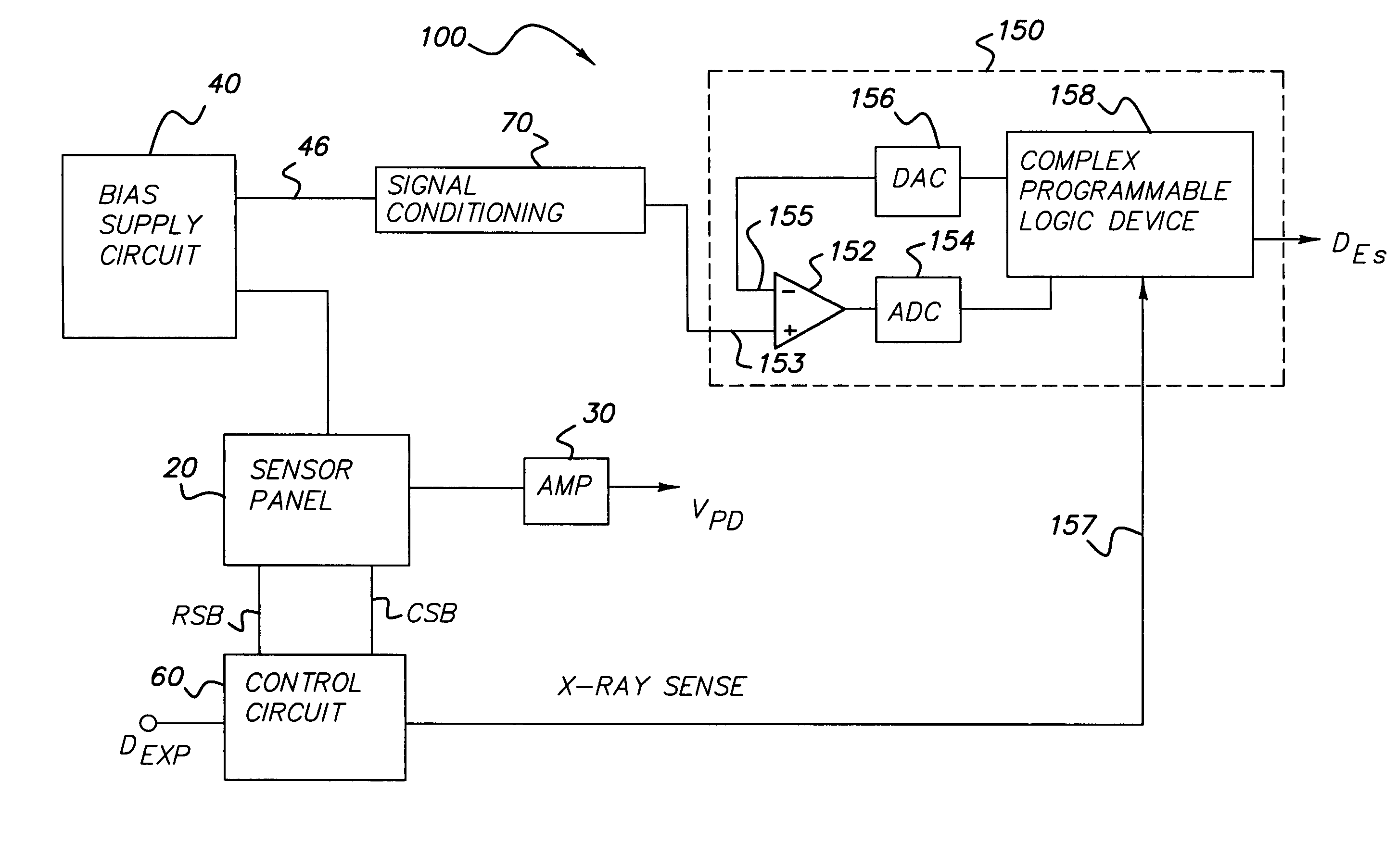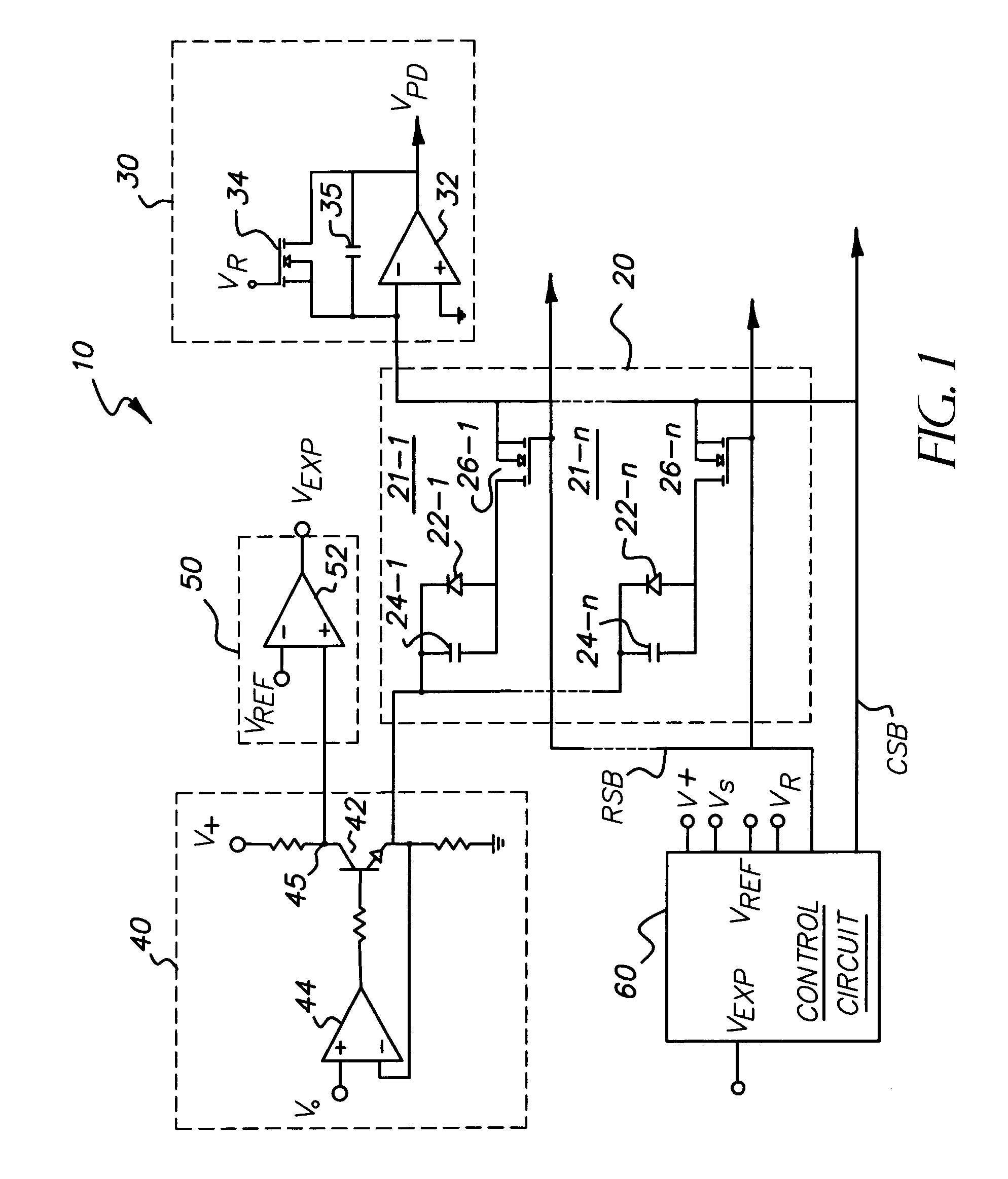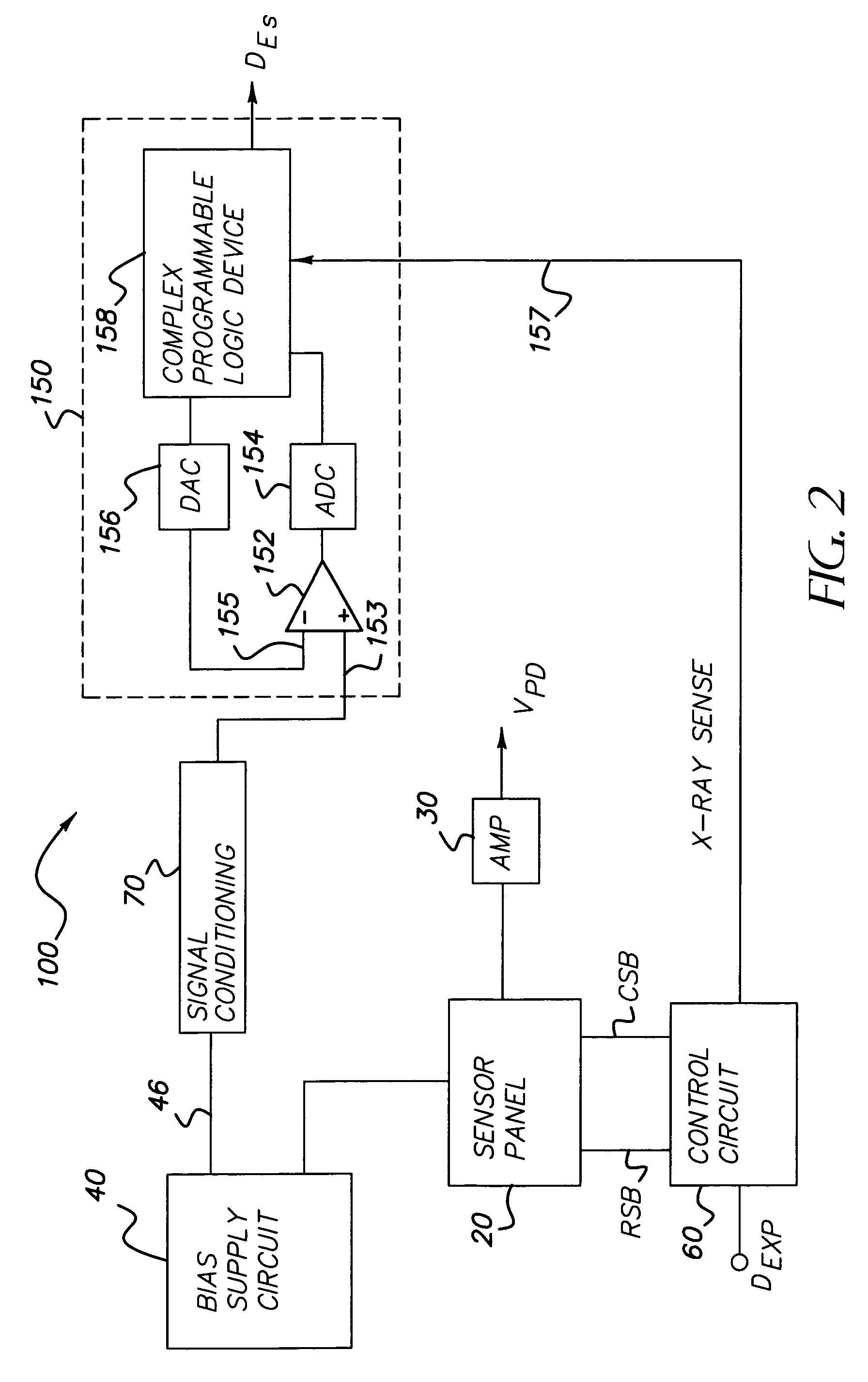Wireless X-ray detector for a digital radiography system with remote X-ray event detection
a digital radiography and wireless technology, applied in the field of medical imaging, can solve the problems of low manufacturing yield, undue cost of cassettes, and the diodes themselves, and achieve the effects of improving the signal to noise ratio of the exposure detection circuit, detecting quickly and precisely, and more precise compensation of dark currents accumulated
- Summary
- Abstract
- Description
- Claims
- Application Information
AI Technical Summary
Benefits of technology
Problems solved by technology
Method used
Image
Examples
Embodiment Construction
[0016]In FIG. 1, a wireless X-ray detector is shown which includes an X-ray sensor panel 20, a charge voltage photodetector output amplifier 30, a photodetector bias supply circuit 40, an X-ray exposure presence detector 50 and a control circuit 60.
[0017]Sensor panel 20 is of amorphous or crystalline silicon or metal insulated semiconductor material. Panel 20 includes a plurality of pixels 21 arrayed in a matrix of rows and columns. For convenience, only a single column of pixels 21-1 to 21-n is illustrated. Each pixel includes a photodiode 22 and a charge capacitor 24 for collecting charge from the photodiode during X-ray exposure. Typically, capacitor 24 consists of the inherent capacitance of the photodiode 22. The pixel further includes a solid state output switch 26 which is preferably a thin film field-effect transistor.
[0018]Amplifier 30 comprises a charge amplifier 32 adapted to output pixel photodiode signals VPD after each X-ray exposure. Additionally, the negative-positiv...
PUM
 Login to View More
Login to View More Abstract
Description
Claims
Application Information
 Login to View More
Login to View More - R&D
- Intellectual Property
- Life Sciences
- Materials
- Tech Scout
- Unparalleled Data Quality
- Higher Quality Content
- 60% Fewer Hallucinations
Browse by: Latest US Patents, China's latest patents, Technical Efficacy Thesaurus, Application Domain, Technology Topic, Popular Technical Reports.
© 2025 PatSnap. All rights reserved.Legal|Privacy policy|Modern Slavery Act Transparency Statement|Sitemap|About US| Contact US: help@patsnap.com



